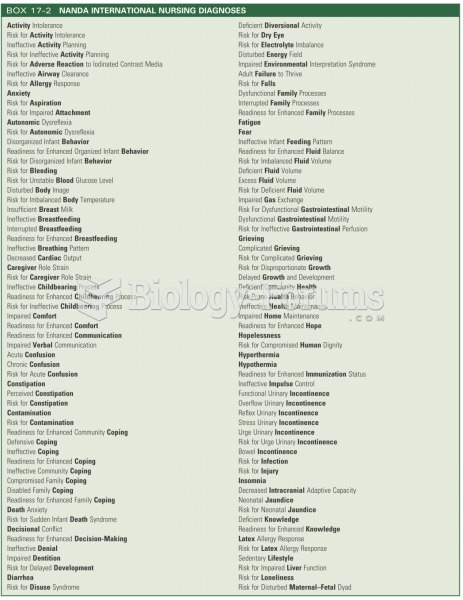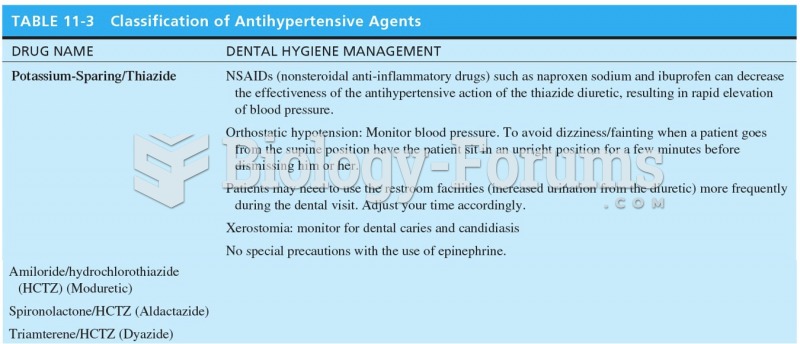Answer to Question 1
Correct Answer: 2
Rationale 1: The NIC taxonomy may or may not help with documentation.
Rationale 2: The NIC taxonomy, like NOC, is similar to NANDA diagnosesbroadly stated interventions that are standardized in language and generalized in nature. Each nursing diagnosis contains suggestions for several interventions under the NIC taxonomy, and nurses must select the appropriate interventions based on their judgment and knowledge of the client.
Rationale 3: Although it would utilize standard language for all nurses and offer suggestions of interventions for each diagnosis, finding the most appropriate interventions still requires individualization for each client.
Rationale 4: This taxonomy is general and standardized and must be tailored to fit the needs, outcomes, and goals of the individual client.
Answer to Question 2
Correct Answer: 2
Rationale 1: This option lacks some of the required components of a well written intervention.
Rationale 2: A written intervention should include a verb, conditions, and modifiers, plus a time element. Identifying what to do (ambulate), how to do it (with a gait belt), and how long (twice daily for 15 minutes) is the most precise statement.
Rationale 3: This option lacks some of the required components of a well written intervention.
Rationale 4: Client will ambulate in the hallway is a goal statement, not an intervention.







